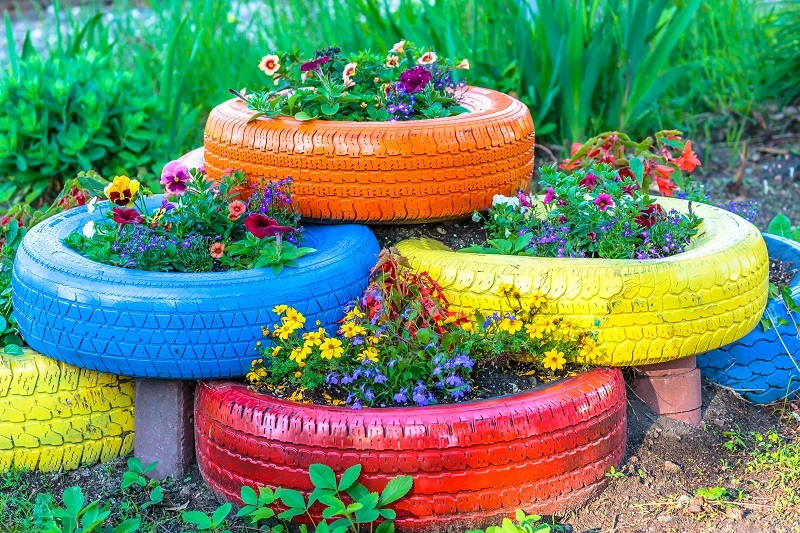Harness 3 Uncomplicated Techniques for Flower Freshness
Posted on 26/08/2025
Harness 3 Uncomplicated Techniques for Flower Freshness
Fresh flowers are a joy to the senses, whether in a bustling kitchen, a serene workspace, or a grand event. Yet, their fleeting beauty can often wilt too soon, leaving us longing for a way to preserve their vibrancy. If you're searching for simple, effective, and practical methods to achieve lasting floral freshness, you're in the right place. This article will help you harness three uncomplicated techniques for flower freshness--methods that promise brighter bouquets and happier spaces.

Why Does Flower Freshness Matter?
From romantic roses to cheerful lilies, fresh flowers have been cherished for centuries, not just for their beauty but also for their symbolic significance and uplifting qualities. Keeping your flowers fresh doesn't just enhance their visual appeal; it extends their sentimental value and helps you make the most of your investment. Whether you're a home gardener, florist, or occasional flower buyer, learning how to extend the life of cut flowers is invaluable.
This comprehensive guide explores three core, simple techniques for flower freshness. These methods do not require specialized tools or costly ingredients--just basic, readily available supplies and a little attention.
Technique #1: Perfect the Prepping Process
1. Trim Stems Strategically
Flower stem trimming is the first and perhaps most vital step in maintaining flower freshness. Upon bringing flowers home, always recut the stems at a 45-degree angle under running water. This diagonal cut increases the surface area for better water uptake and prevents the base from sitting flush against the vase, which can otherwise restrict water absorption.
- Use sharp, clean shears or a knife--dull blades can crush the stem and impede water flow.
- Cut about 1 to 2 inches from the base, removing any bruised or slimy ends.
- Repeat trimming every two to three days to maintain maximum freshness for your bouquet.
Moreover, remove any leaves that will sit below the waterline in the vase. Submerged foliage decays rapidly, encouraging bacterial growth that can significantly reduce your flowers' lifespan.
2. Clean and Condition Vases
Even the freshest flowers can wilt quickly if placed in an unclean vase. Thoroughly wash your vase using hot, soapy water, then rinse well to remove any residue. Lingering bacteria in vases can immediately begin to affect delicate flower stems.
- Disinfect periodically with a diluted bleach solution (1 part bleach to 10 parts water) if vases are being reused, especially for large or expensive bouquets.
Next, fill your vase with fresh, lukewarm water. Cold water can shock most flowers, while lukewarm water is easily absorbed. Special exceptions exist for bulb flowers like tulips (which benefit from cool water), but for mixed arrangements, lukewarm is often best.
Technique #2: Control the Water Quality
1. Use the Right Flower Food or DIY Solutions
Commercial flower food sachets contain the optimal blend of sugar (for nourishment), acidifier (to lower water pH and enhance uptake), and biocide (to prevent bacterial growth). Always use the provided packet if available.
If you don't have commercial flower food, simple DIY solutions can work wonders. Here are a few tried-and-true recipes:
- Lemon-Lime Soda & Bleach: Mix 1 part clear lemon-lime soda (not diet) with 3 parts water and add a few drops of bleach. The soda supplies sugar and acid, while bleach prevents bacteria.
- Vinegar & Sugar: Dissolve 2 tablespoons of white vinegar and 2 tablespoons of sugar in 1 quart of water. Vinegar lowers pH and sugar feeds the flowers.
- Aspirin: Crush a standard aspirin and drop it into the vase water--aspirin contains salicylic acid, which helps retain water friendliness within the stem and discourages bacteria.
Change the water every two days and replenish with fresh solution each time. Clean the vase briefly during each change to prevent residue buildup.
2. Monitor Water Levels and Viscosity
Flowers drink more than you might think. Evaporation and stem absorption mean water levels drop rapidly, especially in dry or warm environments. Make a habit of topping up or refreshing water daily. If water ever appears cloudy, that's a sure sign it's time to clean and refill.
Technique #3: Optimize Your Flower Environment
1. Choose the Ideal Display Spot
Where you place your vase plays a major role in flower longevity. Keep arrangements away from sources of direct heat like radiators, sunny windows, and appliances. Excess warmth speeds up metabolism and leads to premature wilting.
- Display flowers in a cool, shaded room when possible.
- Avoid bathrooms with frequent steam or kitchens, where temperature and humidity fluctuate dramatically.
- Refrigerate overnight if you won't be enjoying your bouquet during late hours.
2. Steer Clear of Ethylene and Other Threats
Many don't realize that ripening fruit produces ethylene gas, which accelerates flower aging. Avoid placing flower arrangements near fruit bowls, especially those with bananas, apples, or pears.
Additionally, protect flowers from drafts, fireplace smoke, and even open windows that may carry pollutants or drastic temperature changes detrimental to bloom freshness.
Bonus Tips for Flower Freshness: Little Habits, Big Impact
Alongside the three fundamental strategies for keeping flowers fresh, several small habits can keep your blooms in top condition:
- Mist petals lightly with water if your environment is especially dry, particularly for humidity-loving blooms like hydrangeas and orchids.
- Handle flowers gently when rearranging or trimming; bruised petals and stems release ethylene, hastening decay.
- For especially delicate flowers, like tulips or ranunculus, support stems with floral wire or place in narrow vases to reduce drooping.
Frequently Asked Questions About Simple Flower Freshness Techniques
How can I keep flowers fresh without flower food?
If you lack commercial flower food, use a homemade solution: mix 2 teaspoons of sugar and 2 tablespoons of white vinegar into one quart of water. This blend nourishes the flowers and inhibits bacterial growth, helping to extend flower freshness with mere pantry staples.
Is it true that pennies keep flowers fresh?
Placing a clean copper penny in the vase is a traditional method to maintain flower freshness, as copper exhibits antimicrobial properties. However, its effectiveness is less reliable than prompt water changes and clean stems. Treat it as a complement, not a replacement, for the above techniques.
Should I refrigerate my flowers overnight?
Refrigeration dramatically slows metabolic and bacterial activity. Many florists recommend placing bouquets in the fridge overnight, especially before special occasions. Ensure the fridge is not too cold and that your flowers are protected from blasts of cold air or contact with produce.
Understanding the Science Behind Flower Freshness Techniques
When you keep flowers fresh, you're sidestepping three major enemies: dehydration, microbial growth, and accelerated aging. Each uncomplicated method targets a key biological process:
- Trimming stems under water eliminates air bubbles, allowing unhindered water transport.
- Acidic water and low sugar levels mirror natural xylem sap, reducing shock to the plant tissues.
- Cleansing both the vase and water deters bacteria, fungi, and algae--microbes that can block the delicate vascular systems in flower stems.
This triad of science-backed techniques works for nearly all cut flowers, from lush peonies to sturdy sunflowers.
Quick Troubleshooting: Common Fresh-Flower Issues
- Browning petals: Often occur due to excessive humidity or fungal growth. Remove affected petals and reduce moisture directly on blooms.
- Cloudy water: Indicates microbial build-up; wash your vase and replace water immediately.
- Drooping stems: Usually result from a blockage. Re-trim stems sharply under water and reposition in fresh, clean solution.

Popular Variations and Myths Around Flower Freshness
Many old wives' tales circulate regarding keeping flowers fresh longer. Some believe in adding vodka or gin to the water, which may slightly inhibit bacteria but also dehydrate stems. Others tout the addition of crushed aspirin, which can, in fact, help certain woody stems absorb more water.
- Bleach and sugar comes closest to commercial flower food in function, balancing nourishment and microbial control.
- Avoid adding too much sugar; it can feed bacteria if not paired with an acidifier or biocide.
Conclusion: Enjoy Longer-Lasting, Stunning Bouquets
With these three uncomplicated solutions for flower freshness, you can transform every bouquet into an enduring centerpiece. Start by perfecting your prepping process--clean vases, sharp cuts, and leaf removal lay the groundwork. Next, focus on your water quality--refresh, replenish, and nourish with balanced solutions. Finally, optimize your flower environment--avoid heat, drafts, and ripening fruit. Honor these habits, and your flowers will not only look spectacular, but they'll also create lasting, memorable moments in your home or office.
By embracing these simple, proven techniques, flower freshness is no longer a fleeting luxury--it's an everyday reality within easy reach.
Harness uncomplicated methods for flower freshness, and let every bloom tell a story of vibrancy and life, day after day.
Latest Posts
Colorful Birthday Bouquet Ideas
Harness 3 Uncomplicated Techniques for Flower Freshness
Boosting the Endurance of Your Poinsettia Flora





